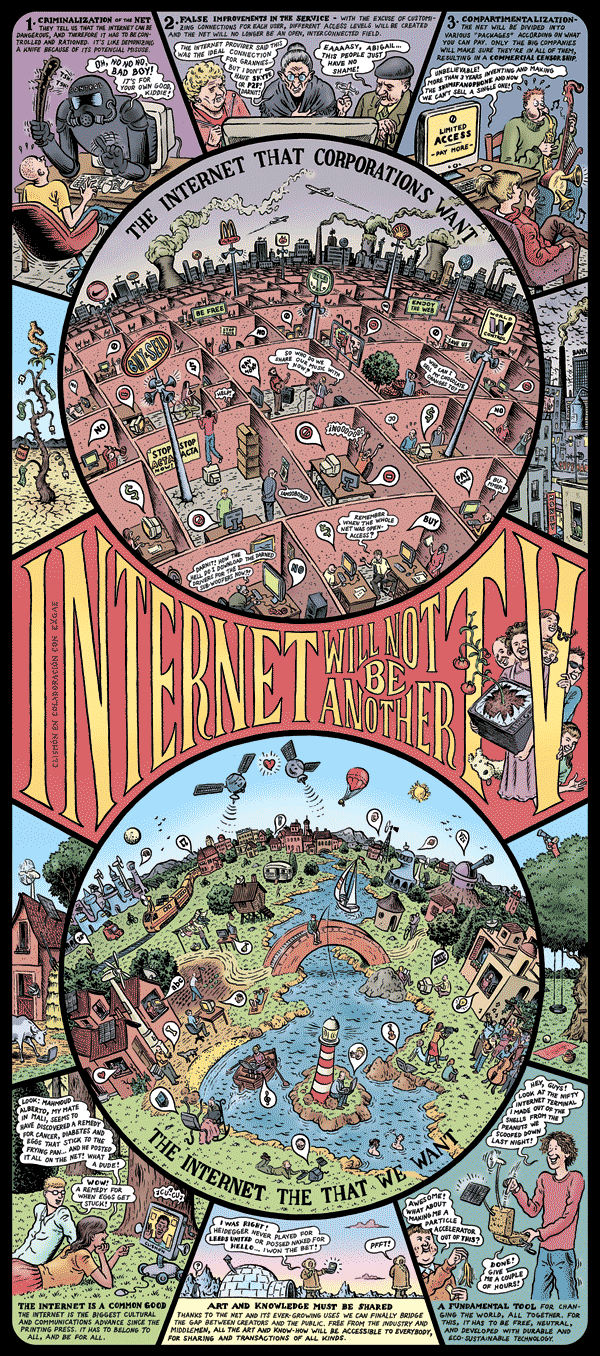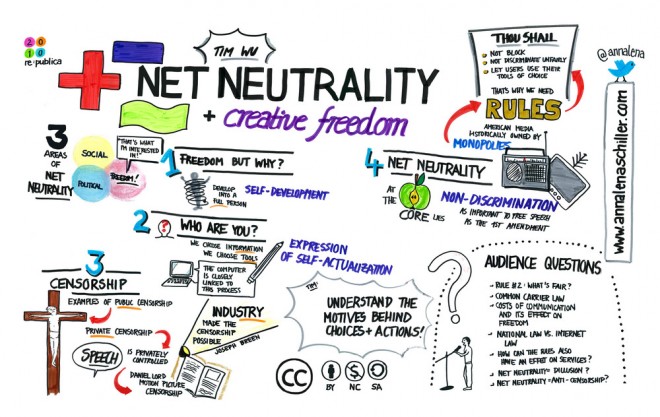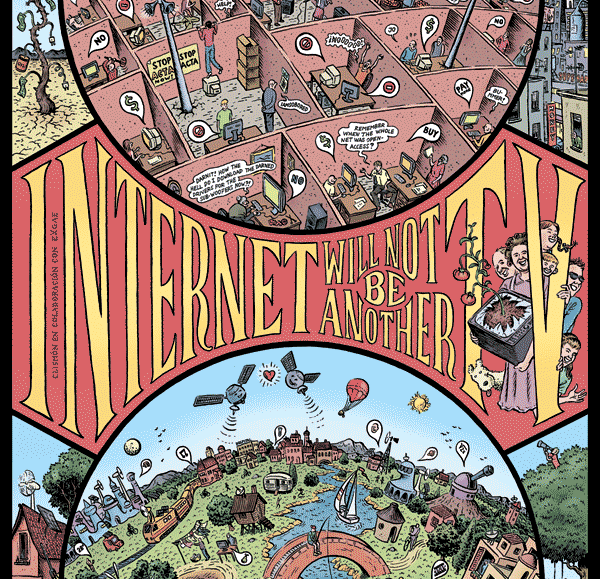
When a federal appeals court struck down on Tuesday an Federal Communications Committee ruling meant to prevent Internet service providers from prioritizing some website traffic over others, it was seen as a blow to the so-called “open Internet” and proponents of net neutrality.
The FCC put its net neutrality rules in place in 201o in order to ensure equal access to all types of content. But a federal court ruled Tuesday that the commission didn’t have the legal authority to enforce its own policy.
The threat to net neutrality has spurred grassroots efforts at whipping up awareness of the importance of keeping the Internet free of the type of restrictions that are possible without enshrining net neutrality as part of the law.
This graphic comes from Internet NO será otra TV (INTERNET WILL NOT BE ANOTHER TV) by artist Miguel Brieva. The drawing, evoking R. Crumb’s best work, is clearly pro-net-neutrality, contrasting the two potential outcomes of the issue — a dystopian police state at the top standing in stark contrast to a more idyllic world at the bottom, where “the Internet is a common good.”
This low-tech infographic was created by German data visualizer Anna Lena Schiller. Its stream-of-consciousness riff about net neutrality outlines how an open Internet fosters creative freedom.

Maybe you didn’t know that the idea of net neutrality was popularized by Columbia Law School professor Tim Wu, or that some large brands like Microsoft, Ebay and Amazon are actually in favor of it. Onlineschools.org is here to help. The organization also deserves bonus points for citing sources at the bottom of the graphic and explaining rationally why someone might be opposed net neutrality.
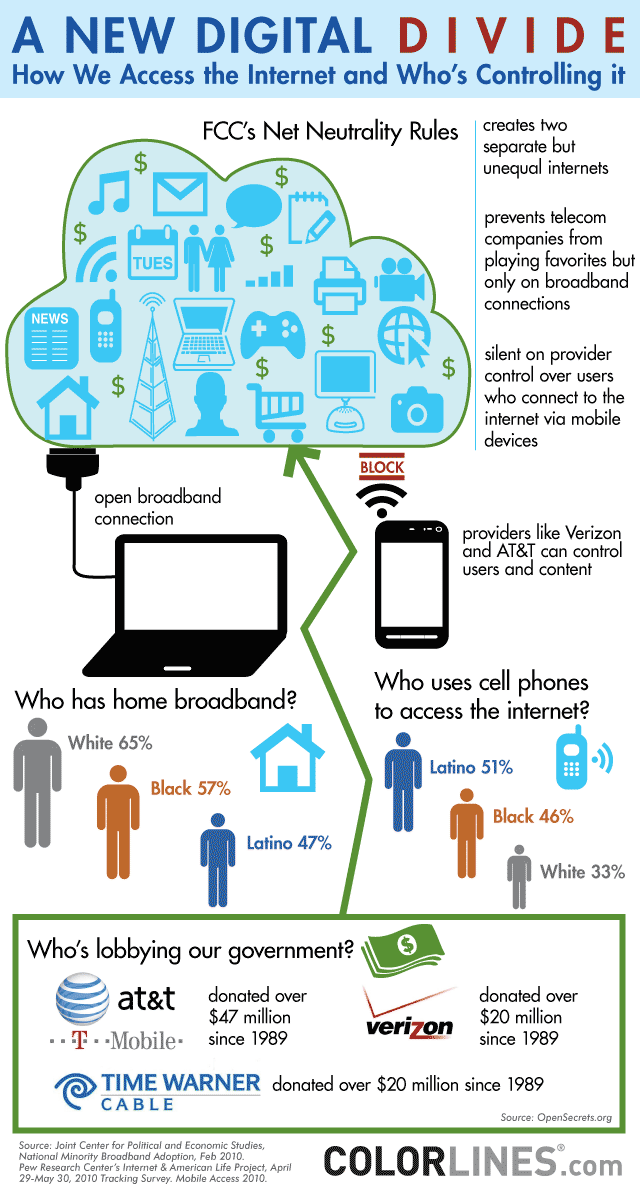
This infographic from Colorlines, a magazine that covers issues pertaining to race and culture, delves into how mobile and desktop Internet audiences differ — and how neutrality disproportionately affects different communities.
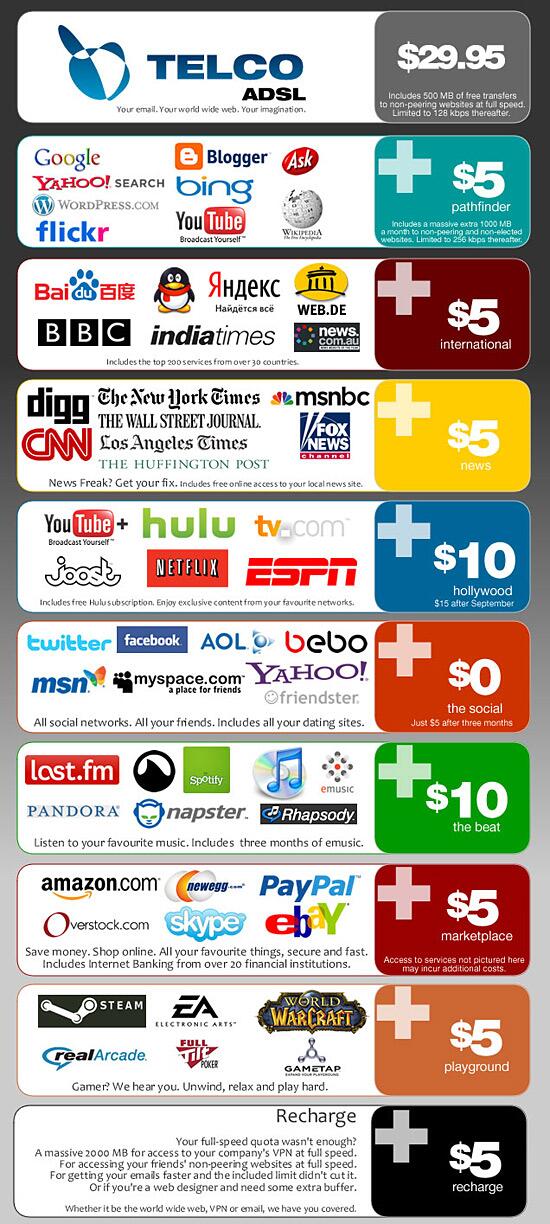
This infographic is actually from 2009. It was created by a redditor named quink who wanted to show sardonically what a cost structure might look like if we happen to lose net neutrality.
More in Media

Here are the biggest moments in AI for publishers in 2025
Here are some of the moments that defined how publishers adapted to the AI era this year.

Digiday+ Research roundup: Gen Z news consumption and diversification in the DSP space were 2025’s top trends
As 2025 winds down, we rounded up the biggest trends of the year, based on the data that resonated the most with Digiday’s readers.

What publishers are wishing for this holiday season: End AI scraping and determine AI-powered audience value
Publishers want a fair, structured, regulated AI environment and they also want to define what the next decade of audience metrics looks like.
